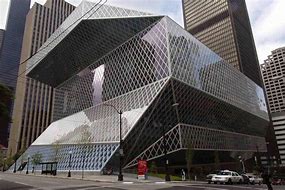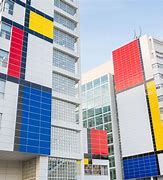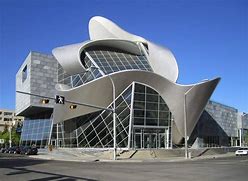
TERRA MATA (400,000 – 300,000 BCE)
Their houses were made of : Oval plant huts , walls of branches , aligned stones , interior posts supporting a central beam , central fireplace → living environment
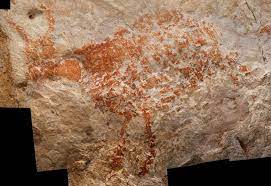
CAVERNS (100,000 – 40,000 BCE)
Believed about the continuity of life after death and had a complex social structure . In their houses they had graves surrounded by flowers and branches
ÇATAL Hüyük (6,500 BCE)
Rectangular buildings without streets , separated just by a courtyard .
Built with adobe bricks and the roofs covered with rammed mud on vegetable mats.
No front door. People came in using a ladder, through a hole in the ceiling.
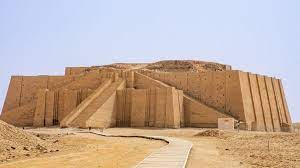
Ziggurats : they are temples built on top of natural or artificial platforms overlapped and stepped with ramps and ascending stairs, imitating the dwellings of the gods .
The structure resembles the pyramids of Egypt, but in this case always housed a mortuary chamber inside.
EGYPT (3,500 BCE)
Thanks to the discovery of concrete, they created new things like the coverage of large public spaces with arches, vaults or domes.
Their ideals were : stability, functionality and magnificence.
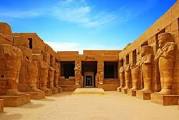
Temples
They were placed on very high podiums whose staircase was located in the axis of the door of the cella .
They used different plans : circular , cruciform … and elements like arches and vaults.
The domes that covered buildings solved the technical problems of the Greeks.

Pyramids ” eternal constructions “
Bringing the concept of elevation , replacing the adobe brick and tree trunks with limestone masonry.
Pyramids were integrated in the temple set, portico with chapels and wall.
ANCIENT CREECE (1,200 – 146 BCE)
System based on the exaltation of human capabilities .
• Search for the equilibrium between vertical (columns) and horizontal (beams of the entablature) loadbearing elements.
• “The aim was to achieve excellence in form, detail and execution, in order for the human being to achieve maximum potential. “

Greek cities: the Polis
• Buildings are organized by zones and related functions.
• The agora was the center of life, a meeting place , and took place in the main streets .
.
Religious buildings: temple
*It was the most important building, dedicated to a divinity.
It was placed on a base . Inside the nucleus was the cella, a very simple closed space that kept the divine image .
• The initial basic form of the temple was a wooden structure (1,050 BCE).
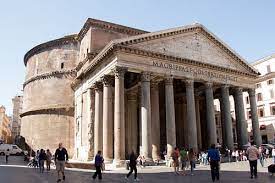
• The interior space was very simple and private . It contained large sculptures.
The public rites were celebrated in the altar in front of the temple.
Public buildings: Theatre and Stadium
The largest open-air buildings that were very important for the culture, education and community life of the polis.
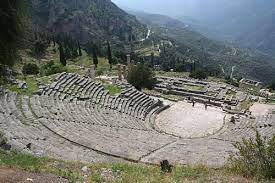
Theatres were usually located on a hill , from where you could see the polis.
With good proportions and the surrounding serving as a theatrical frame , they had excellent acoustics and great capacity.
Private buildings: houses
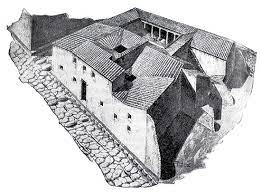
• Greek houses were simple. They had a central courtyard or peristyle, around which the rooms were located .
• There are no Greek houses left in good condition.
ROMANS (1,100 BCE – 476 CE )
They created new forms and were able to experiment with interior space, lights and shadows thank to the concrete .
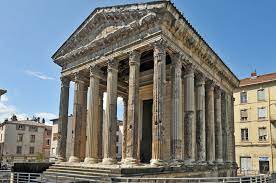
Religious buildings
- Temple –> they used archs and vaults . They developed domes to cover buildings solving the technical problems of the Greeks.
Civil works
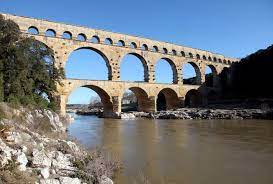
- Sewage networks→ vaulted galleries that carried sewage to rivers or the sea.
- Aqueducts → some are still being used for water supply to cities.
- Roads→ that reached all points of the empire.
- Bridges→ some are also still being used.
- Walls → to protect the cities against the enemy.
Public buildings
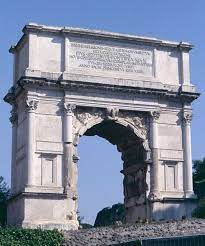
- Triumphal Arches → ceremonial works and a source of architectural and sculptural details.
- Commemorative columns: monument made to commemorate an important event, such as a military victory.
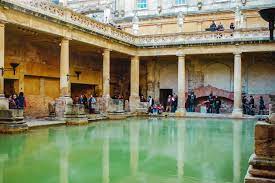
- Thermal baths contained:
- Apodyterium: for changing and storing clothes.
- Tepidarium: warm room.
- Caldarium: hot room.
- Frigidarium: cold room.
- Natatio: open-air swimming pool.
- Palaestrae: exercise rooms
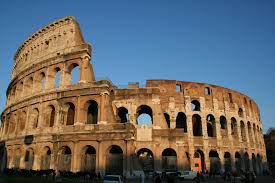
- Theater : good proportions , they were not embedded in the slopes of the mountains , their steps were built on a radial system of inclined concrete vaults raised on stone pillars. They were perfectly semi-circular. They were employed to perform .
- Amphitheater → main Roman architecture’s innovation , dedicated to fights between gladiators with beasts, or between them . They had hatches with systems to lift the beasts and flood mechanisms for naumachia (naval battles).

- Basilica → courts of justice for legal proceedings and built next to the forum , usually rectangular, with central nave and aisles with a stage and apse at each of the two ends.
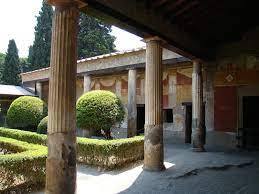
- Circus → destined for races, gladiatorial combats, shows and performances.
- Domus → Mosaics, paintings and sculptures decorated these types of residences. They had water, sewage and heating facilities.
- Insula → buildings of three or four floors subdivided in different flats. The ground floor was used for tabernæ, shops and businesses. They were built with low quality materials and wood and each flat was divided into two premises, one for cooking and the other for sleeping.
Cities
Romans structured the city with an orthogonal planning
In the heart of the city was the forum.
The basilica was one of the main buildings of the forum. The two main orthogonal streets were drawn from the forum :
- Cardus (North-South)
- Decumanus (East – West)
This design continues in many cities nowadays. They had a system of walls and fortified gates.
Architecture throughout History (ll)
5th Century A.D.
Churches and other religious buildings became the only important architecture .
The BYZANTINE (6th Century)
Byzantine architecture is the architecture of heaven, full of symbolism .
Byzantine architecture was so religious and focused on the interior.
Roads were modified in order to connect religious buildings .
Stone was widely used, especially the one expelled to the oldest buildings, either in a hurry in construction or to save on materials .
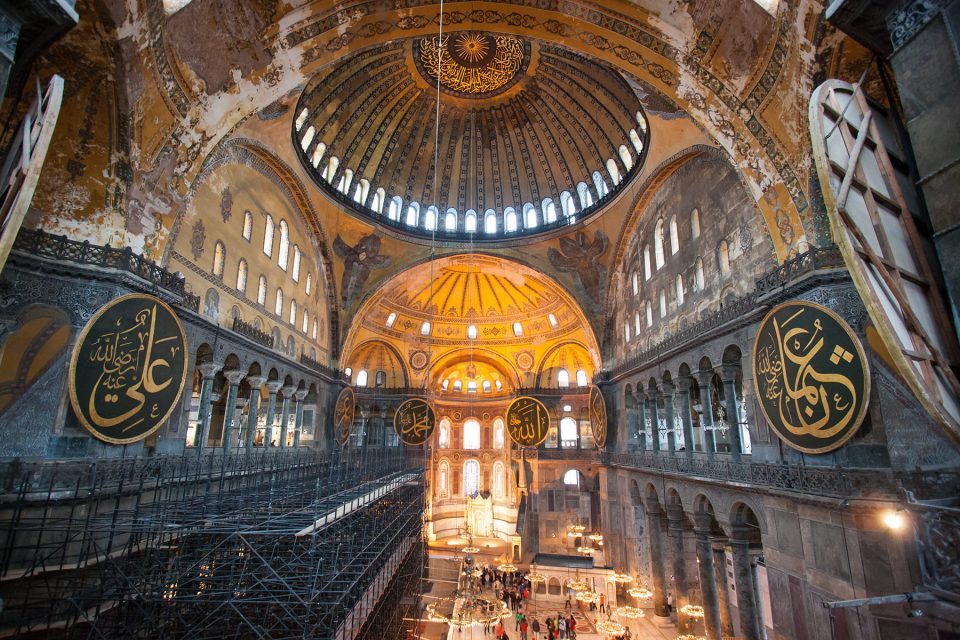
- Hagia Sophia : represents the union between the Empire and the Church .
It is a combination of the central plan of the Roman buildings with dome, and the Roman basilicas. The central dome was an artistic and technical achievement.
The four triangular concave pendentives where the dome was placed served as a transition between the circular shape of the dome and its rectangular base.
Mosaics that clad the domes with dim and trembling light were used .

- Military Architecture :New cities develop in very small areas in order to concentrate resources and defend better in case of attack , a defensive lifestyle appeared . The implementation , the maintenance of defensive systems, and the collection and distribution of water were so important .
Justinian began a systematic program of reinforcement of the cities, restoring the
ancient walls and adding fortified centers . It is the passage from the city to the military fortification .
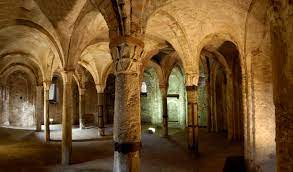
THE LOMBARDS (6-8th century)
Their style was uniform , based on the use of the plundered elements of Roman buildings .
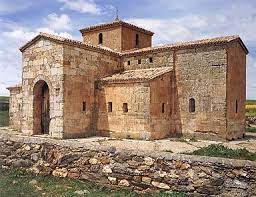
THE VISIGOTHS (7-8th century)
Ecclesiastical architecture that delineated a central floor typology with massive forms .
They were not large buildings, with basilical floor plan, flat apse, horseshoe arch, Corinthian capitals, stone walls without buttresses, and wooden roofs.
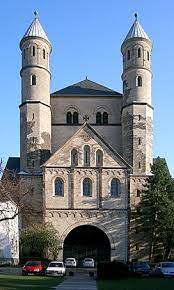
CAROLINGIAN EMPIRE (9th century)
Monumental buildings such as palaces, cathedrals and monasteries were built again.
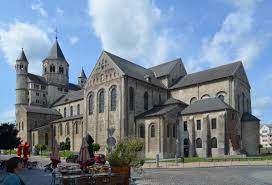
THE SAXONS
HOLY ROMAN EMPIRE (9-10th Century)
Among their innovations is the use of galleries , tribunes, the alternation of supports (pillars and columns)…
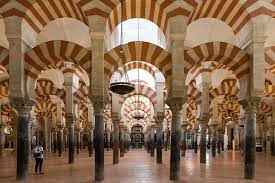
ISLAMIC (Al Andalus) (8-15th Century)
They used towers and water , Towers are defensive elements but also viewpoints over the landscape. In the gardens they design water routes and introduce different aromatic plants.
Islamic architecture produces new architectural types such as mosques and baths for religious and hygienic purposes.
The ornamentation creates an atmosphere with plays of light and color.
Techniques such as ceramics and plaster were used.
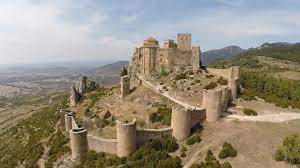
ROMANESQUE (10th-12th Century)
Due to the political instability, the feudal lords usually fortify the cities and the palaces that become castles (residences and military squares) .

It undertakes an extent architecture and art loaded with symbolism (paintings, reliefs, geometries…) and lose realism.
This symbolism shows up especially in the delicately sculpted capitals .
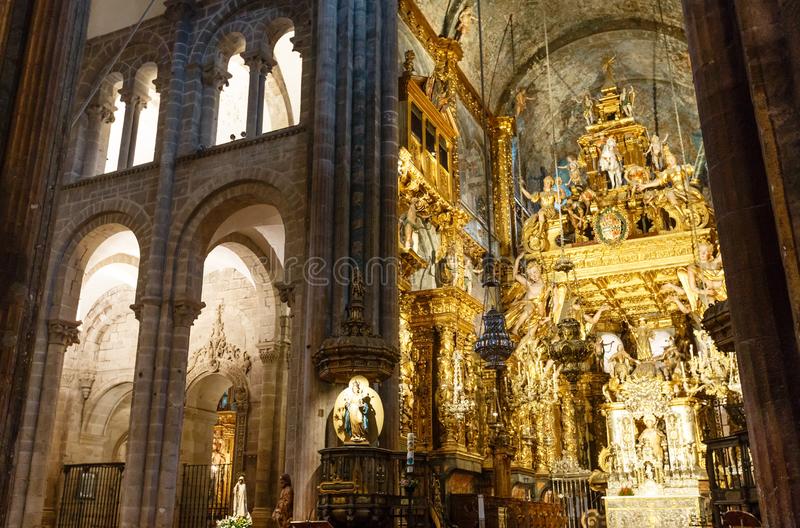
Religious buildings are characterized by large masses and heavy proportions , based on the use of the semicircular arch and the Roman vaults , which due to their weight require the thickening of the walls as opposed to the use of pillars and the adjacent buttresses.
For this reason, openings are so reduced.
GOTHIC (12th-15th (16th) Century)

Temples became full of light.
The pointed or ogival archT absorbe weight vertically , easier than absorbing lateral forces which is the great innovation of this style.
- Cathedrals :Sculpture returns again to naturalistic realism, in order to be more convincing in its educational purpose.
The cathedral was the house of God, so they wanted to reach great heights that reduce the human scale .

They introduced improvements as pointed arches (stained glass windows substituted the walls )and ribbed vaults (increased the height) .
Habitual plan follows the basilica tradition with parallel naves.
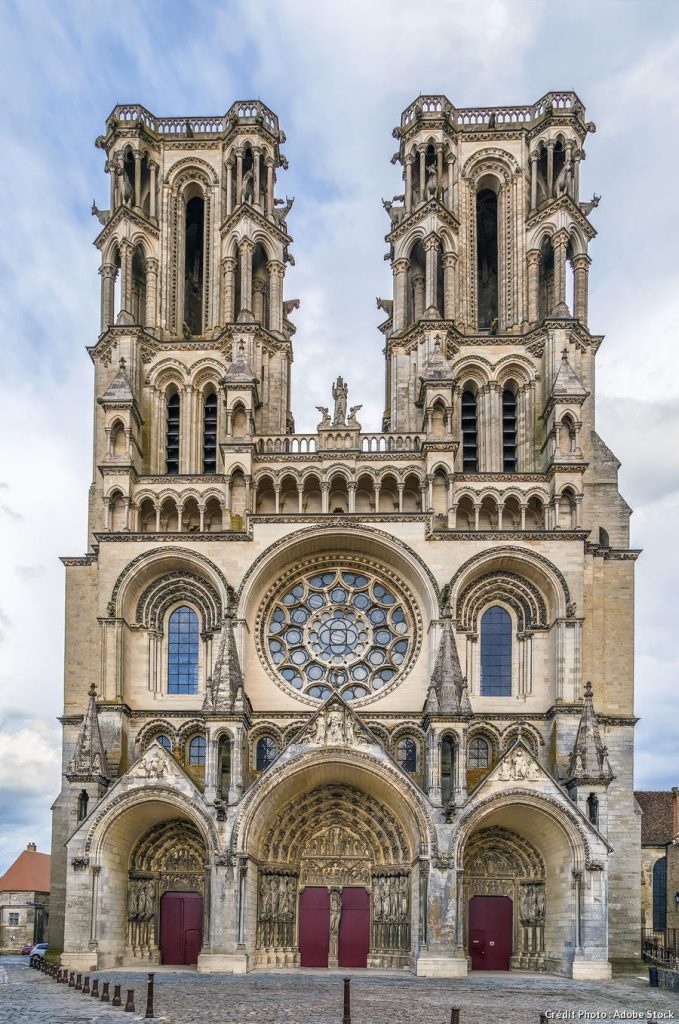
With stone structure that gave way to lighter materials in the panels (plements), above the vaults, in the façades (stained glass windows), in the roofs.
The buttresses as shoring system for the arches of the central naves increased the effect of verticality.
Decorations are usually very fine frescoes directly on the stone or on altarpieces, with religious motifs, starry skies and sometimes feigned stone or brick.
- Civil buildings

City councils were built
The stately palaces were the symbolic and administrative place of power.
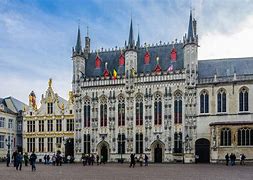
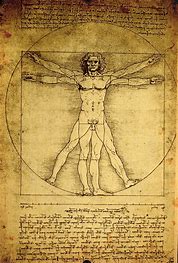
RENAISSANCE (15th-16th Century)
Optimism and confidence in human potential arise.
The scientific perspective was discovered.
Plato’s ideal figures were recovered: circle, square and equilateral triangle.
Hence symmetry and proportion were basic to the project and the system of ideal proportions laid on the human body.
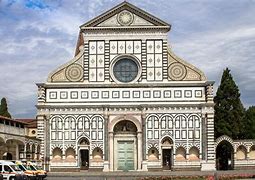
The new architecture was formed by planes and spaces organized according to clear and
decipherable numerical proportions, with delimitations and intervals well delineated by the elements of the architectural orders of the Ancient times, but at the same time inviting to the human delight.
- Filippo Brunelleschi
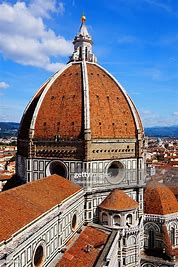
“Architecture is a mathematical science that operates with spatial units .”
He’s proportions were based on “separation between columns is equal to their height, at the same time equal to the depth of the gallery, creating cubic space”

- Leon Battista Alberti Alberti is one of the great architects in both theory and practice.
His buildings are full of demonstrative intentions and subtle formal resources oriented to proportion, which is the essence of Architecture.
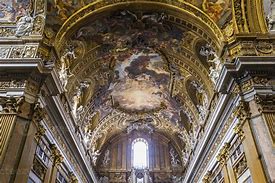
- Mannerism
Sensualism was introduced , maintaining the classical architectural norms and elements, variations or deviations began to be made.

- Andrea Palladio
He designed his villas using numerical systems of proportionality for the rooms, devising a variety of types characterized by the simplicity of the floor plan, the compositional proportion and the functionality.
In the villas he adapted the central body of the house to the forms of the ancient temple topped by a pediment, considering that the Roman temples were derived from the hut and thus returning the portico with columns to their origins, the private house.
- Michelangelo
He was one of the greatest artists: sculptor, painter and architect.
He illustrates the transition between Renaissance and Mannerism .
BAROQUE PERIOD (17th-18th Century)
“Propaganda and glorification of power, in the formation of national states and in the reaffirmation of the Counter-Reformation.”
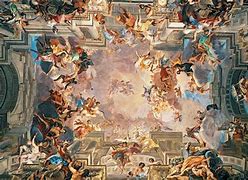
It also showed an interest in the natural environment.
It’s architecture was an effort to obtain the maximum possible effects from the moulded space, the manipulation of light, colour and sensual details .
The structure was secondary , they were focus on the visual effect and decoration .
It is an artistic expression in which fantasy, mutability, the multiplication of scenographic effects, asymmetry, the use of lights, water and the movement of space intervene.
- Gian Lorenzo Bernini
Italian architect, sculptor and painter.
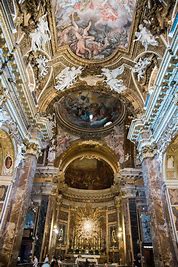
He enjoyed the favor and protection of seven popes, for whom he made numerous works with great success and recognition.
- Francesco Borromini
His work was always based on simple geometric elements, triangles, circles and ellipses
- Rococo
Aim of surprising and ostentation.
With warm and dreamy interior spaces that contrast with the conditions of dirt and unhealthy exteriors.
The interiors manipulate natural lighting, but it hides the structure and detaches itself from it.
NEOCLASSICISM (18th Century – 19th)
Trend towards objective knowledge of history as a scientific discipline arose
Neoclassicism was the formal expression that reflects in the arts the intellectual principles of the Enlightenment .
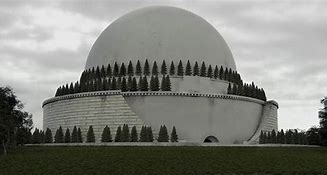
Its style was linked to the idea of public service and educational functions of the buildings .
Étienne-Louis Boulle and Claude-Nicolas Ledoux were the representatives of this new “talking architecture”.
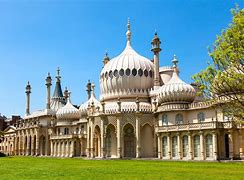
19th CENTURY
New construction materials provided by industry appeared: cast iron and glass.
A desire to evade reality and a desire for past times spread, giving rise to historicism, exoticism and a mixture of styles .
A new vision of art, more realistic.
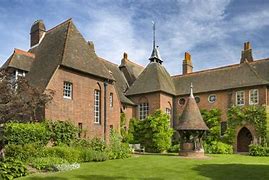
- Anti-machinism
A critical current linked to Romantic picturesqueness that rejected the dreariness of the real world and longed for a return to an idealized medieval world based on the work of guilds.
20th CENTURY
An aesthetic taste was developed that broke with historicism to follow new and modern ideas.
It is characterized by clean lines, curves and undulating inspired by nature and oriental art, with geometric formal simplification towards two-dimensionality.
